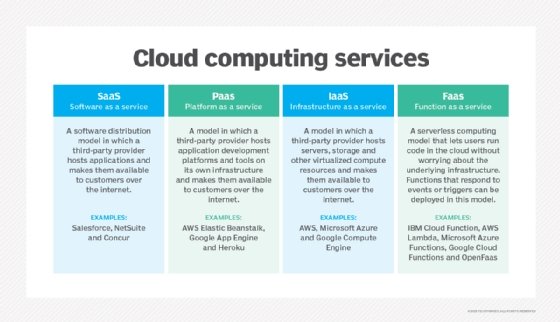Attain More with LinkDaddy Cloud Services: Enhancing Your Cloud Services Press Release Method
Attain More with LinkDaddy Cloud Services: Enhancing Your Cloud Services Press Release Method
Blog Article
Simplify Your Facilities With Cloud Services
As companies navigate the ever-evolving landscape of modern technology and data management, the role of cloud solutions in streamlining infrastructure has actually ended up being increasingly prominent. The allure of structured processes, enhanced performance, and enhanced source allocation through cloud remedies is indisputable. However, the trip towards a more affordable and dexterous IT facilities includes more than just moving to the cloud. It requires a calculated approach and a deep understanding of the subtleties of cloud adoption. So, just how can companies properly browse this change and really open the possibility of cloud services for simplifying their framework?
Advantages of Cloud Services
Cloud services use a structured method to managing IT infrastructure, giving organizations with scalability, cost-efficiency, and adaptability. One of the key advantages of cloud solutions is the scalability they provide.
Furthermore, cloud solutions eliminate the requirement for organizations to purchase pricey software and hardware. This cost-efficiency is a considerable advantage, specifically for tiny to medium-sized business wanting to lessen in advance costs. By utilizing cloud solutions, organizations can access premium IT resources without the substantial cost related to typical infrastructure arrangements.
In addition, cloud services provide businesses with the flexibility to access their data and applications from anywhere with a net link. This level of availability boosts collaboration amongst teams, enables remote job, and enhances overall efficiency. The flexibility offered by cloud solutions equips services to adapt quickly to altering market problems and consumer needs.
Expense Savings and Scalability
Along with the operational advantages highlighted earlier, the combination of cloud services right into a firm's infrastructure comes up with considerable expense financial savings and boosted scalability. Cloud services offer a pay-as-you-go model, enabling services to scale resources up or down based on current demands, therefore preventing the expenses related to keeping excess capacity. This flexibility makes it possible for firms to adapt swiftly to varying demands without incurring unnecessary expenses.
Furthermore, cloud services eliminate the demand for upfront financial investments in equipment and software application, lowering capital investment. Operating budget are also minimized as companies no more need to take care of and maintain physical servers, leading to lower power intake and IT staffing costs. Additionally, cloud services give automated updates and maintenance, making certain that the framework continues to be updated and protected without requiring hands-on interventions.
Improved Safety Steps
Executing strict protection measures is paramount when integrating cloud solutions right into a business's facilities to make certain and guard delicate data conformity with sector policies. Cloud solution carriers supply improved protection functions such as data file encryption, firewall software security, and multi-factor authentication to reduce cybersecurity threats.
Moreover, routine protection audits and conformity evaluations assist recognize susceptabilities and make sure adherence to sector requirements. Companies can also gain from features like automated security updates and real-time hazard tracking supplied by cloud company. By focusing on protection steps and remaining aggressive in addressing potential risks, services can with confidence leverage cloud solutions while protecting their beneficial data from unapproved access or violations.
Transitioning to Cloud Facilities
To successfully incorporate cloud solutions right into a company's facilities, a structured strategy that resolves the shift in the direction of cloud-based options is essential. Transitioning to cloud infrastructure includes mindful planning and execution to ensure a smooth movement process. The first action is to assess the existing infrastructure and identify which applications and systems appropriate for movement to the cloud. This analysis should take into consideration factors such as data sensitivity, conformity needs, and efficiency needs.
As soon as the evaluation is total, a movement strategy should be established. This method ought to lay out the timeline, resources, and obligations for moving each element to the cloud. It is crucial to communicate this strategy plainly to all stakeholders to make sure positioning and lessen disruptions during the shift.
Throughout the movement procedure, surveillance and testing are important to identify and deal with any issues promptly. Normal checkpoints should be developed to track progression and make essential adjustments. In addition, training for employees on utilizing cloud solutions need to be provided to ensure a successful shift and make the most of the benefits of the brand-new framework.
Ideal Practices for Cloud Fostering
Effective fostering of cloud solutions rests on the critical placement of company objectives with technical abilities and business readiness. To ensure a smooth transition to the cloud, organizations must start by performing a comprehensive analysis of their existing facilities and identifying which work are best suited for cloud movement. It is crucial to entail crucial stakeholders from various divisions in the decision-making process to why not find out more get buy-in and attend to any kind of worries beforehand.
Another finest method for cloud universal cloud Service fostering is to focus on safety and security and compliance. Organizations should carefully examine the safety and security procedures provided by cloud company and make sure that their data is safeguarded according to industry standards and regulative requirements. Applying durable information file encryption, access controls, and regular protection audits can assist alleviate risks linked with cloud adoption.

Final Thought

As organizations navigate the ever-evolving landscape of modern technology and information monitoring, the duty of cloud services in streamlining facilities has ended up being increasingly popular - linkdaddy cloud services. Just how can organizations efficiently navigate this shift and really unlock the potential of cloud services for streamlining their facilities?
Cloud services use a streamlined technique to handling IT facilities, providing services with scalability, cost-efficiency, and versatility. By making use of cloud services, companies can access top notch Find Out More IT sources without the substantial cost tag linked with traditional framework arrangements.
To make certain a smooth transition to the cloud, companies ought to begin by performing a detailed evaluation of their current infrastructure and recognizing which work are best matched for cloud migration.
Report this page